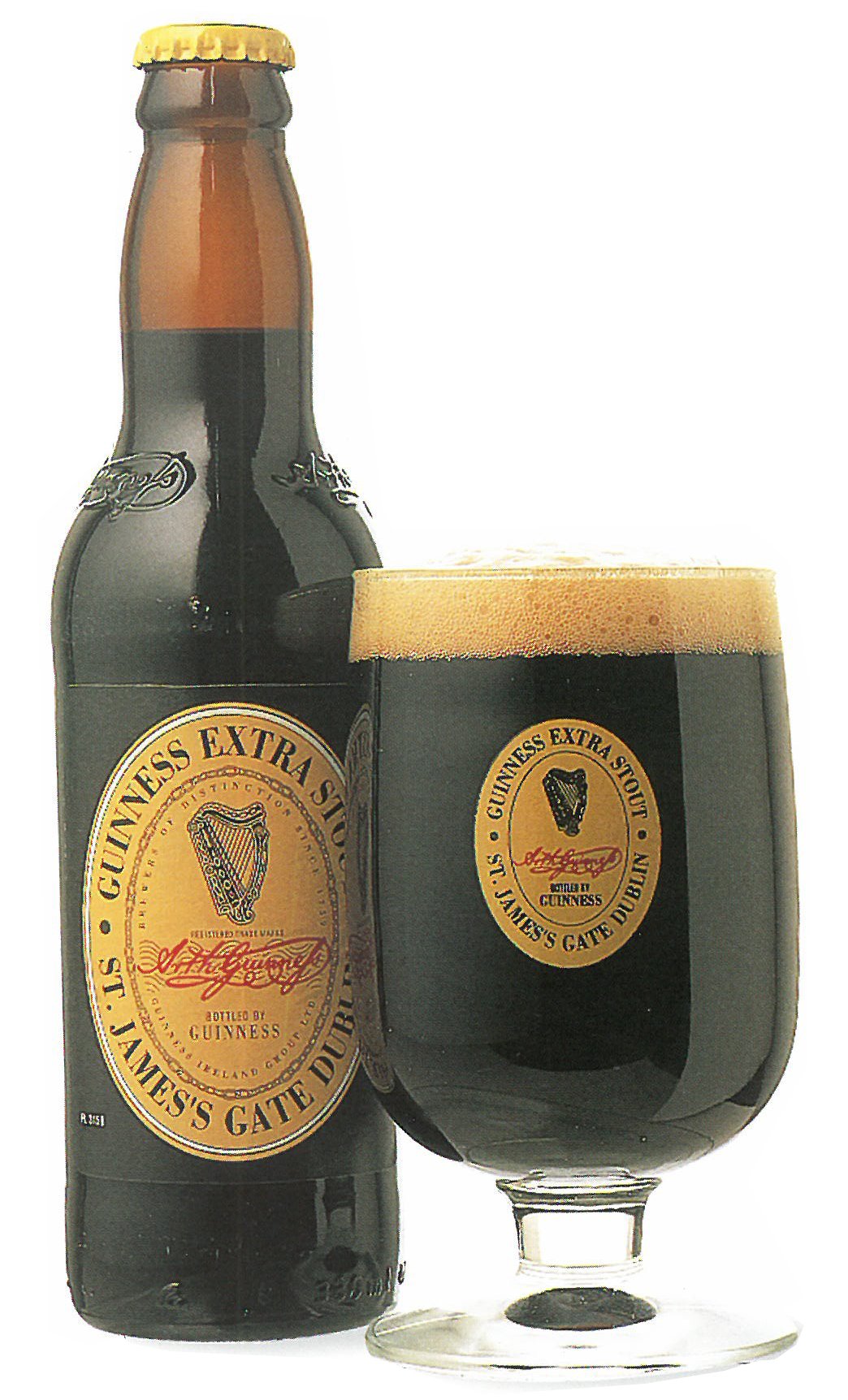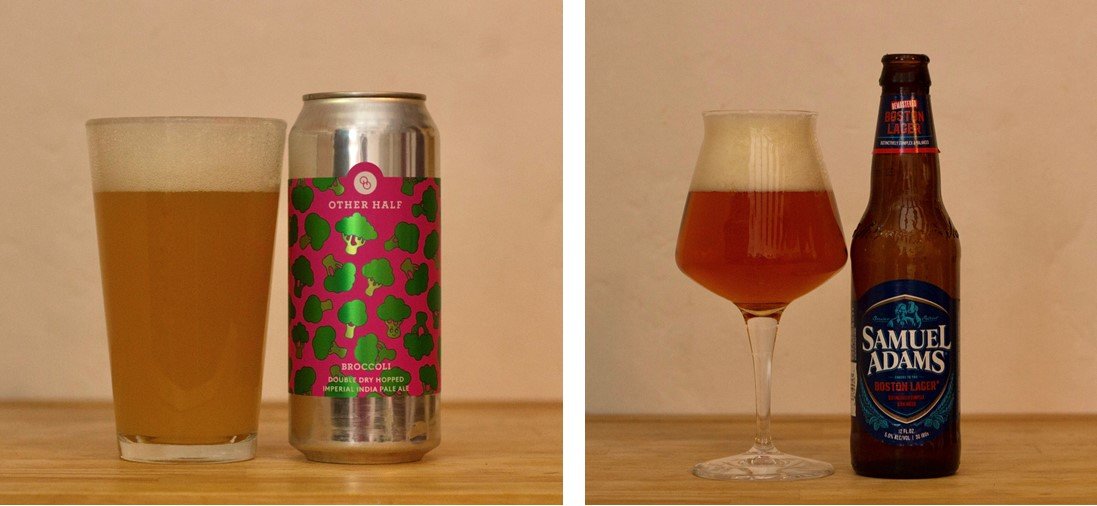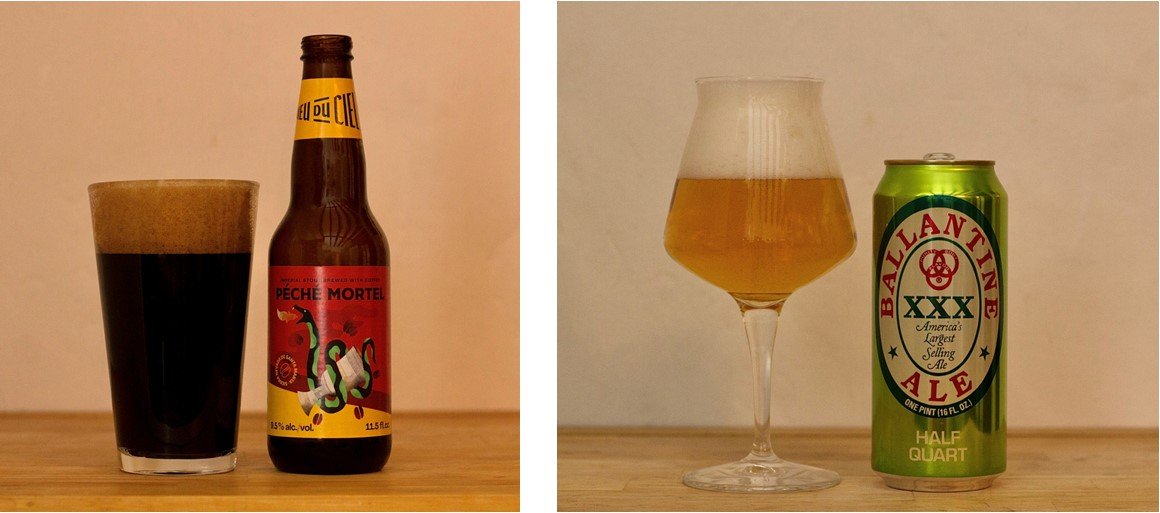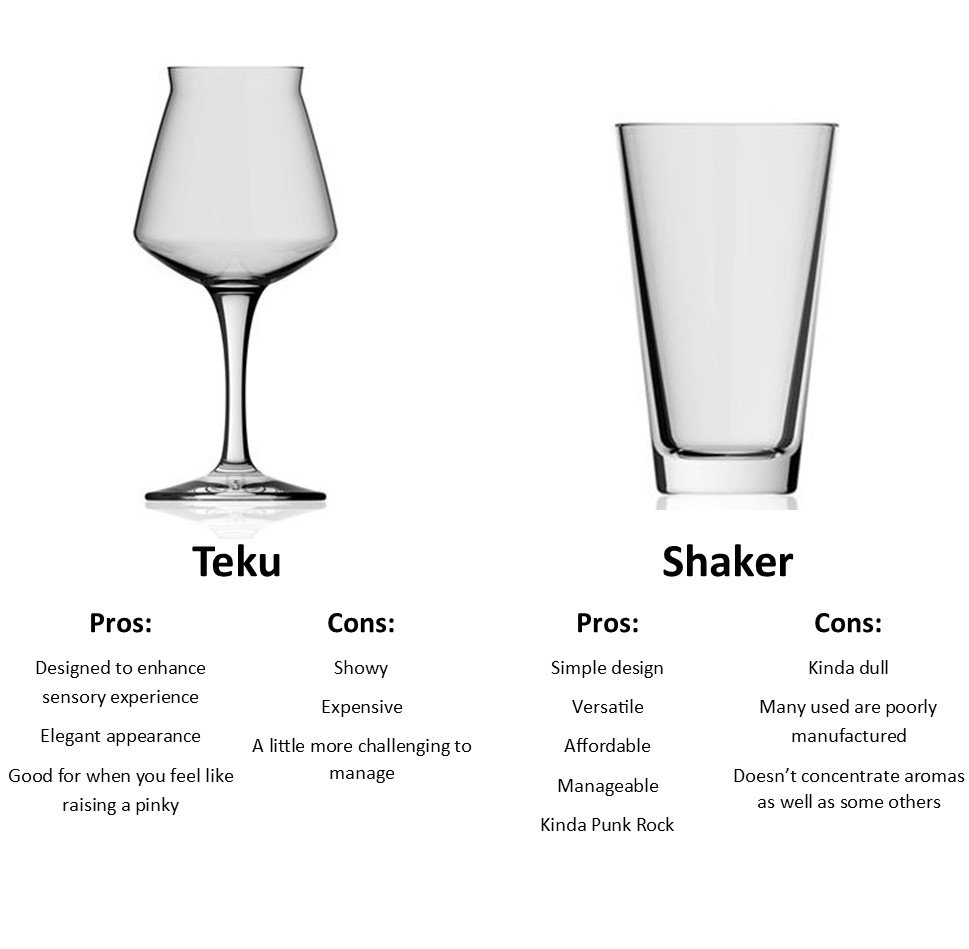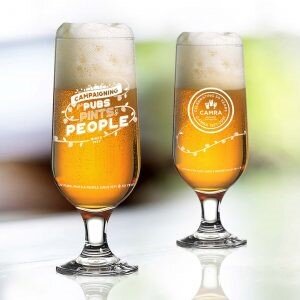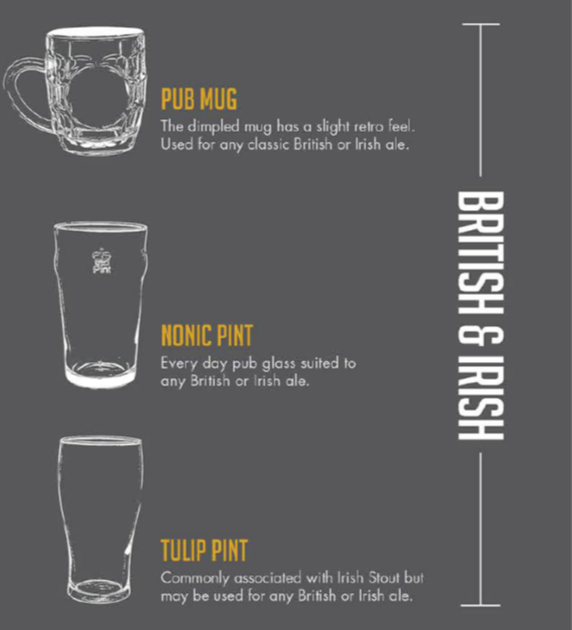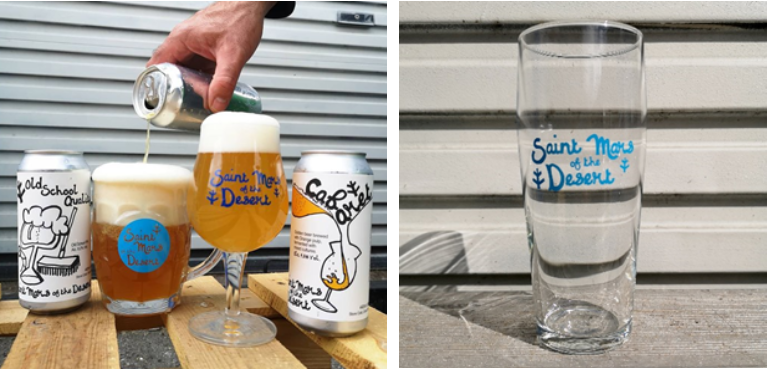If you can’t find a thistle glass to pour your Scottish Ale into, don’t worry, it’s not really a thing.
While it’s true that the flowering thistle plant is an important part of Scottish heritage and culture, walk into any Scottish pub and you will not find people using this glass for beer. This is as true today as it was in the past. It’s not news, but it’s worth a brief post to help make the case.
(Just a note up front on the differing types of Scottish Ale. Though one might argue the thistle glass is reserved for the stronger Scottish Ales, I’m not getting into a breakdown of sub-styles and corresponding glassware here. Instead, Scottish Ale is used broadly relating to beer, and meant to encompass the varying terms you may hear like Scottish Ale, Scotch Ale, Strong (Scottish) Ale, Wee Heavy, all the shillings, etc. If you are looking for more information on what Scottish beer was and is, I highly recommend Ron Pattinson’s blog, Shut up about Barclay Perkins, as well his his books on Scotland.)
Why A Thistle?
“It is fitting that Scotland should have special glasses for her own mountain dew…” Old English Glasses, 1897
The flowering thistle plant became the national emblem and flower of Scotland due to a 13th century tale about a Norse invader trying to be stealthy while sneaking up on Scottish soldiers and with bare feet accidentally stepping on a prickly thistle. His cry of pain alerted the Scots, which allowed them to fend off the invaders and ultimately protect their homeland.
In the Glass
Centuries later, some suspect that thistle-shaped glasses made their way to Scotland from Bohemia. Given its significance to the Scots, the glass shape was warmly embraced. Highlighting its importance, the 1928 book Old Glass and How to Collect It, notes, “the earliest examples of English cut glass are perhaps the thistle-shaped glasses.”
However, it’s likely that the glass shape was used more for whiskey (as the above 1897 quote was referring to), sherry and other strong drinks rather than beer. Even then, its use was probably limited to the upper class.
More commonly, other glassware shapes incorporated the thistle through hand-cut or etched decorations. Additionally, breweries have used thistle imagery in their marketing.
William Younger beer mat featuring a thistle. Image source: Shut up about Barclay Perkins.
Maclay’s Export Ale beer mat featuring at thistle. Note the brewery name. Image source: Shut up about Barclay Perkins.
William Younger Scotch Ale ad from 1922 with a foaming pint of beer in a conical-type glass. “When dinner’s late, or when the meat Is overdone, - unfit to eat, When cook spoils soup and joint and curry, Just drink Scotch Ale and do not worry.” Image source: Invaluable.
Caledonian Brewing Merman label with a mythical figure holding a pewter tankard. Image source: Beerbible.net.
William Younger’s ad with a figure holding a dimple mug. Image source: Breweryhistory.com.
William Younger’s ad featuring a man holding a conical glass. Image source: Shut up about Barclay Perkins.
A survey of historic brewery marketing materials reveals no depictions of thistle-shaped beer glasses. If the glass is an iconic part of the history and culture, you’d think it would show up somewhere, but it doesn’t.
Instead, what you find are conicals, glass and pewter tankards, pokals, stemmed tulips and dimple mugs. Above are a few examples of older marketing materials from several notable breweries. An ad for William Younger’s notes, “A foaming tankard of this rich brown Ale gives the crowning touch to a hearty meal.”
Looking at the drinkware landscape for Scottish Ale today, it’s not much different. Typically, breweries and pubs use conicals, tulip pints and nonics. You may also see stemmed tulip-type glasses and dimple mugs. Traquair regularly depicts a tankard with their beer. Belhaven makes use of stemmed tulip glasses on occassion, but has recently been featuring a tulip-esque pint glass of their own (that seems similar to the newer pint glass that Guinness has been using. Perhaps it’s a trend. It’s not one that I’m particularly in love with.)
McEwan’s tulip pint glass. Image source: DRAM.
Traquair tankard. Image source: Traquair.
Fyne Ales stemmed tulip glass. Image source: Fyne Ales Instagram.
Belhaven pint glass. Image source: Greene King.
Scottish Beer in Belgium
The relatively flashy nature of the thistle glass design is atypical for a beer glass in Scotland (and most other places), but it’s right at home in Belgium where British beers were popular in the earlier part of the twentieth century.
The popularity led an English importer in Antwerp to create his own brand for the Belgian market. This brand, Gordon’s Highland Scotch Ale, was originally brewed by George Younger & Son in Alloa, Scotland (after changing hands many times, it is now actually brewed in Belgium). Their branded thistle glasses go hand in hand with the beer, now sold as Gordon Scotch Ale. They also often have a special Christmas edition thistle glass for their Xmas beer.
It’s hard to find any history on this glass, but it’s not surprising that the company would embrace it being in a country where most breweries have their own unique glass shape. Many of them, like the thistle, are stemmed glasses with a tulip-esque appearance. The thistle glass was perhaps a way to assimilate with the Belgian beer market, while at the same time using something distinctively Scottish.
However, while there are numerous other Scottish-style ales being brewed in Belgium, Gordon may be alone with the thistle glass shape. Brands like Wielemans Scotch CTS (an historic example as the brewery closed in 1988) and De Glazen Toren have associated chalice-type glasses with their Scottish Ales, while Watney’s and Brasserie de Silly use stemmed tulips for theirs.
Wielemans Scotch C.T.S. beer mat. Image source: LastDodo.
De Glazen Toren Canaster Scotch Ale. Image source: De Glazen Toren.
Watney’s Scotch Ale. Image source: Cafe De Statie.
Silly Scotch. Image source: Brasserie de Silly.
Wrapping up
So where did we get the notion that the thistle glass was somehow an important part of Scottish beer culture? The Gordon glass may have played a role. However, the 1993 book, Scotch Ale, by Greg Noonan likely had a significant impact, at least in the United States. The cover prominently features a beer in a thistle glass. The book’s contents do not get into glassware or indicate an explanation for why the glass was used. Maybe it was influenced by Gordon. The influential book likely conveyed to a generation of brewers, homebrewers and enthusiasts, that the glass had some meaningful connection to Scottish Ale.
While there are still some unknowns, it seems certain that the thistle glass was never a regularly used vessel for the consumption of beer in Scotland. This does not mean that it never will. Cultures evolve in funny ways and American misunderstandings occasionally have a backwards influence. Though odd for me, in this case, I don’t know if I would hate that.
So, the next time you’re having a Scottish Ale and not sure what glass to use, if that matters to you at all, you’re safe with a tulip pint, nonic, conical, or dimple mug. For strong brews, a snifter, chalice-type glass might be nice. If you have a thistle glass, go for it if it makes you happy.
For further reading on dimple mugs, check out this older post: Not All Dimple Mugs are Created Equal
For further reading on nonics (noniks) , check out these two older posts: An Incomplete History of the Nonik Glass and Revisiting the Nonik Glass History




























